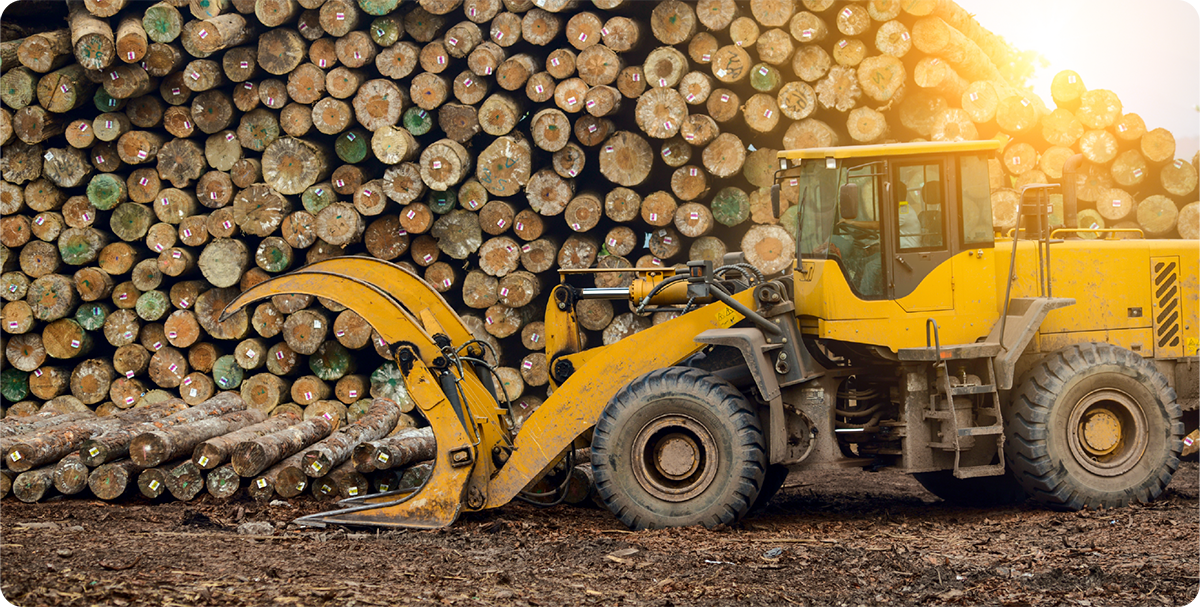Top hardware and software players continuously promote innovative solutions for the industries. Intense competition never ceases, especially given the price the manufacturers are eager to pay to achieve maximum cost reduction and revenue increase. See what legacy tools and practices are morphing into to drive the advancement of Wood Industry 4.0.
written by:
Veronica Chizh
Top hardware and software players continuously promote innovative solutions for the industries. Intense competition never ceases, especially given the price the manufacturers are eager to pay to achieve maximum cost reduction and revenue increase. See what legacy tools and practices are morphing into to drive the advancement of Wood Industry 4.0.
The forest fuels multiple economies. It makes no distinction between developed and emerging markets and is as generous to Japan as it is to India. However, being today’s forest market participant is balancing a tightrope. Uninterrupted supplies require plenty of forest to cut. This may be problematic due to two equally important factors.
- Revenue generation implies deforestation. To counter the impact of excessive felling prosperous economies are gradually increasing forest coverage in their respective territories. In other words, they plant what they cut. However, emerging market players do not control their consumption. As a result of such irresponsive actions of the majority, the problem of resources availability is as intense as ever.
- Another major factor is the weather. The wildfires in California resulted in $19 bln of the total cost to the state, insurers and homeowners. Hurricane Michael hit southern Florida, Alabama and Georgia in mid-October destroying 80 percent of its standing forest in the southern parts of the states. The resulting fiscal burden will lie on the government, taxpayers, as well as all the timber consumers.
Combating the two is next to impossible. Although leveraging technologies to reduce costs, increase efficiency and add value is the option many already enjoy. Each new break-through of top software developers reshapes our vision of resource-based industries and makes such industries less dependable on the environmental factors. So, what are the internet of things opportunities that the wood industry already takes advantages of?
The products and practices shaping the future of the industry
Cutting-edge technologies transform every stage of forest industry - from log supply to woodworking. Metsäteho (Finland) advances the concept of digital wood supply. The sensors attached to the trees provide data on soil, trees quantity and their growth characteristics. Processing this data makes forest management more efficient and gives valuable insight on felling options. Estonian timber leverages high end software right on the felling site. Its technological capacities allow them to create forest survey plans, measure timber diameter and draw up an e-waybill before the truck reaches the factory facilities. Maestro Digital Systems by SCM (Italy) offers a remote assistance and maintenance system, simulation system and IoT platform which blend into the Smart Factory.
The solutions Qulix Systems introduces to the wood product market are simple and efficient. This is what multiple medium businesses require from IoT companies to make a new digital start. These solutions will suit a non-computerized company in need of upgrade. The major concerns of our clients are related to labor management and failure prediction. We propose launching a production process monitoring system. Its main purpose is to calculate OEE (Overall Equipment Effectiveness). Our solution detects unplanned stops of the production line and keeps track of their duration. Gathered information is sent to a local server where events are stored and classified with regard to the cause of the stop.
Another improvement for the factory is implementing a failure prediction system. For a wood processing factory, the engine shut down means 1.5-2 week downtime. Surely, it is never only the time that is lost. Downtime costs include lost production and capacity, labor, inventory, not to mention goodwill damages and actually cost of repair. Production losses alone for a company making 50 units per minute, with each unit bringing $1 of profit, equal $50 per minute, or $3000 per hour, respectively. Effective mitigation measures save tons of resources and their effect can be easily measured. Our failure prediction system includes an IoT engine control hub that measures major operating parameters – bearings temperature, vibration and power consumption. Changes to these parameters should be detected and investigated in order to prevent equipment damage. The system of sensors collects huge volume of data on the engine behavior which is then sent to a server storage and analyzed.
For the facilities with the adequate bandwidth, we propose an ANN-based solution to launch high level analytics and forecasting procedures. Thus, the company saves money, as it requires only hours for preventive maintenance, if necessary.
What are the risks to consider?
However, before implementing your initiative, please consider the risks an IoT implementation may carry. For a smooth launch of such top-notch tools, make sure you have
- Clear business case
According to the Capgemini’s report, 50% of the companies have difficulties establishing a clear business case for their investments.
- Reliable security system
Security concerns are frequently the major blocker on the path to digitalization. Sixty two percent of the companies are fighting cyber risks to avoid significant damage to their reputation along with financial consequences.
- Extensive analytics
Sixty percent of the companies admit they don’t have the analytic capabilities to gain value from the data generated from the IoT sources.
Summing up...
If materialized, the above risks undermine many internet of things trends. However, with all the precautions taken, IoT investments certainly pay off and generate revenues or reduce costs, or both, depending on the chosen business strategy. Carefully implemented IoT initiatives are astonishing in their effectiveness when applied to ensure lean production and automation. Although we are yet far from ubiquitous launch of Wood Industry 4.0, digitalization has become a strategic industry-wide imperative. With this in mind, automated factories all across the globe sounds more like a plan now rather than a fantasy.
For more information on IoT projects, visit our page or contact us at request@qulix.com.

Contacts
Feel free to get in touch with us! Use this contact form for an ASAP response.
Call us at +44 151 528 8015
E-mail us at request@qulix.com







